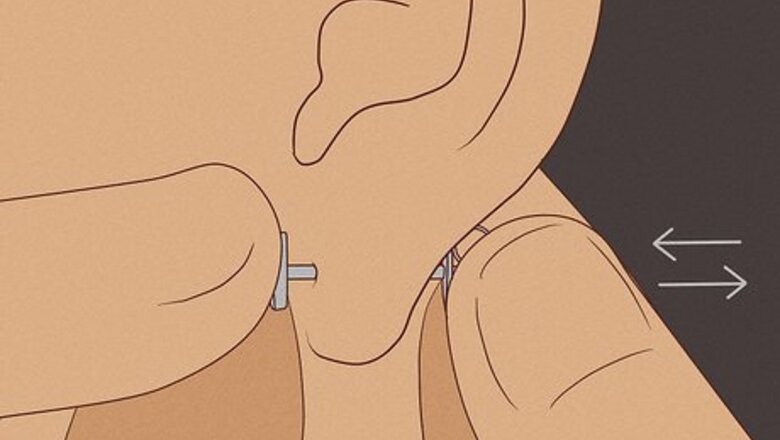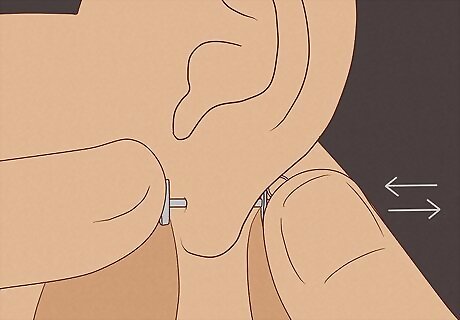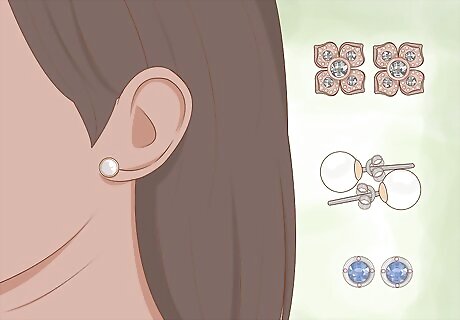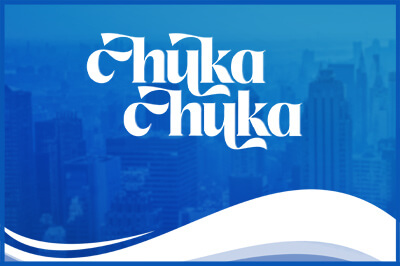
views
The Different Types of Earring Backs

Push back or butterfly back Also known as a friction back, the push back or butterfly back is the most common type of earring back. These backs have a flat front with 2 curled pieces on the back that face the center. When the earring post is inserted into the push back, the curled pieces secure the post in place with friction. Best for: Studs, lightweight dangle earrings, and open hoop earrings. Pros: Easy to put on and take off Comfortable and discreet Affordable Available in lots of sizes and materials Cons: Can’t support very heavy earrings Can loosen over time Difficult to clean dirt and buildup Can snag on clothes or poke ears Meet the wikiHow Experts Stephanie Anders is a piercing specialist and the owner of Royal Heritage Tattoo and Piercing with over 10 years of experience. David Wilkins is a professional body piercer and the owner of The Axiom Body Piercing Studio with over 30 years of experience. Jerry Ehrenwald is a certified jeweler, a graduate gemologist, and the former president of the International Gemological Institute.
Bullet or bell back The bullet back or bell back is another very common earring back. It has a rounded cone shape with a flat, circular lip on the front. You simply insert the earring post inside and the back keeps it secure with friction. Best for: Studs, lightweight dangle earrings, and open hoop earrings. Pros: Easy to put on and take off Discreet, minimalistic design Easy to clean off dirt and buildup Available in lots of sizes and materials Cons: Can’t support very heavy earrings
Screw back The screw back is only compatible with threaded earring posts, as you have to twist the back onto the post to secure it to your ear. The back can come in several different shapes, with the push back/butterfly back and bullet back/bell back being the most popular designs. Best for: Studs, dangle earrings, and open hoop earrings, especially ones that are very valuable or highly sentimental. Pros: Very secure Supports heavy earrings and large gemstones Adjustable for a comfortable fit Cons: Difficult to put on The threads can wear out over time More expensive than other backs
La pousette or locking back The la pousette back or locking back is flat with 2 tabs on each side that keep the earring post locked in place. To put on the backs, you press down on both tabs, which opens up the hole in the center of the back. Then, you insert the earring post and let go of the tabs. Best for: Studs, dangle earrings, and open hoop earrings. Pros: Very secure Supports heavy earrings Flat and comfortable design Cons: Some people may find the tabs difficult to press More expensive than other backs
Flat back As the name implies, flat backs rest completely flat against your ear. These backs have a hollow post attached to them that you insert through the back of your ear. The earring has a smaller post that you stick inside the post on the back. Flat backs come in 2 main designs: the push pin or threadless, where you simply push the earring inside the back, and the threaded, where the back has an internally threaded post that you screw the earring into. Best for: Studs, lightweight dangle earrings, and open hoop earrings. Pros: Very comfortable, especially for overnight wear Great for helix, conch, and tragus piercings Easy to clean off dirt and buildup Available in lots of sizes Cons: Difficult to put on and take off Rests directly against the ear, so it can be uncomfortable if you have a metal allergy
Lever back The lever back is attached to the earring with a hinged arm that opens the earring and secures it closed. You simply pull open the arm, slide the hook-shaped earring into your piercing, and snap the arm closed. Best for: Dangle earrings and hoops. Pros: Very secure Supports heavy earrings Easy to clean Available in lots of materials Cons: The hinged arm can loosen over time Some people may find the arm hard to open and close Can snag on clothes
Latch back The latch back is another style that’s attached to the earring. The earring post is on a hinge that you snap into a notch on the back. Best for: Hoops, huggie earrings, and some dangle earrings. Pros: Very secure Supports heavy earrings Easy to put on and take off Cons: The latch can loosen over time More expensive than other backs
Omega back or French clip The omega back or French clip has a similar design to the latch back: the back is attached to the earring and has a hinged arm. With this style, though, the top of the back has a circular opening that slides onto the earring’s post when you push the hinged arm closed. Best for: Dangle earrings and hoops. Pros: Very secure Supports heavy earrings Cons: Bulkier than other backs Can pinch the ears or feel uncomfortable after long wear More expensive than other backs
Monster or jumbo back The monster back or jumbo back is an extra-thick and extra-large version of the push back that’s especially made for big and heavy earrings. It works the same way as the push back: simply insert the earring through the hole in the monster back, and the curved pieces on the other side will keep your earring in place. Best for: Large and heavy studs and dangle earrings, especially if your ears are stretched or torn. Pros: Very secure Supports very heavy and large earrings Available in lots of sizes and materials Cons: Bulkier than other backs The larger size can be uncomfortable
Comfort clutch ear nut The comfort clutch ear nut is a reinforced version of the bullet or bell back. The front of the comfort clutch ear nut has a large, circular plastic piece that rests against the ear to distribute the weight of the earring. The end of the ear nut is metal and is in the bullet/bell shape. Best for: Large and heavy studs and dangle earrings. Pros: Very secure Supports very heavy and large earrings Easy to put on and take off Affordable Cons: Bulkier than other backs Can feel tight against the ear
Shepherd’s hook The shepherd’s hook is one of the most common backings on dangle earrings. The back forms a hooked shape that you simply slide into your ear piercing. The long end of the shepherd’s hook comes out at a bit of an angle, which helps keep the earring in place. Best for: Light dangle earrings. Pros: Light and comfortable Easy to put on and take off Lots of movement that shows off dangle earrings Cons: Not very secure (but you can add a rubber back for extra security) Can’t support very heavy or large earrings Can poke the ear or side of the neck
Rubber back The rubber back refers to any earring back that’s made out of clear rubber or plastic. They come in many different shapes, like the bullet or bell back, as well as simple cylinder backs and star-shaped backs. Best for: Lightweight studs and dangle earrings. Pros: Lightweight and comfortable Snug fit Discreet and virtually unnoticeable Affordable Great alternative if you have a metal allergy or sensitivity Cons: Not very secure Can’t support very heavy or large earrings Can wear out and stretch Can get lost easily due to their clear color and small size
Clip-on back The clip-on back is a great alternative to traditional earring backs, as they don’t require you to have an ear piercing to use them! Most clip-on earrings attach to your ear with friction and have a hinged arm that you push down to secure the earring to your ear. Some versions have a threaded post that you twist to tighten the earring to your ear. Best for: Studs and dangle earrings, and for people who don’t have their ears pierced. Pros: Great alternative to earrings that require a piercing Easy to put on and take off Cons: Not secure for very heavy or large earrings Can feel tight or uncomfortable if worn for a long time
How to Choose Earring Backs

Consider the style of earrings you want to wear. Some earring backs work better with studs, while others are specifically made for dangle earrings and hoops. For instance, push backs, bullet backs, and flat backs are classic options for studs, while lever backs and omega backs are the most common options for dangle earrings.
Determine the size and weight of the earrings. Make sure the earring backs you choose can support the weight of your earrings and keep them secure in your ears. Large and heavy earrings may require heavy-duty backs like monster backs and comfort clutch nuts, while screw backs and la pousette backs are more secure than the common push backs.
Think about where and how you’re wearing your earrings. Are you planning to wear your earrings every day, or are they only for special occasions? If you’re wearing your earrings every day, consider your general lifestyle, too. Are you very active, and thus need super secure backs, or is your day-to-day pretty low-key? If you plan to wear your earrings every day and keep them in overnight, flat backs are a super comfortable option. Threaded versions may be more secure than push-pins, too. If your earrings are for a special occasion and very valuable or sentimental, extra secure backs like screw backs, la pousette backs, and omega backs can provide peace of mind.
Prioritize your comfort when possible. Choosing the right earring backs is all about balancing security with comfort, and this often comes down to how long you plan to wear your earrings. Flat backs and soft, rubber backs are some of the most comfortable options, but they’re not the best at securing very heavy earrings. Monster backs are pretty bulky, but they hold up heavy earrings the best.
Consider your skin sensitivity. Most earring backs come in metal. If you have metal sensitivities, choose hypoallergenic materials like titanium, niobium, surgical steel, 14k+ gold, and platinum. Rubber and silicone backs are also great alternatives if you have a metal allergy.
Frequently Asked Questions
Which earring backs are the most secure? Screw backs, la pousette backs, monster backs, lever backs, and omega backs are the most secure earring backs. These backs have threaded, snap, or locking mechanisms that hold the back to the earring and keep it in place. Plus, they support large and heavy earrings. Most of these backs work for both studs and dangle earrings.
Can I use the same earring backs for different earrings? Sometimes, but it depends on the style and size of the earring. The more common earring backs, like the push/butterfly backs and bullet/bell backs, tend to be pretty versatile and usually work for all kinds of studs and dangle earrings. However, they might not be compatible with heavy or large earrings that need more support.
How do I clean earring backs? Piercing specialist Stephanie Anders suggests regularly cleaning your jewelry with an alcohol wipe. If your earring backs are made of titanium, professional body piercer David Wilkins says soap and water is perfectly fine, or use an ultrasonic cleaner. If your earring backs are very dirty, let them soak in a bit of isopropyl alcohol or hydrogen peroxide for 5 to 10 minutes. Then, rinse them with water and let them dry. Storing your earrings properly can help keep them clean. Certified jeweler Jerry Ehrenwald suggests that you “keep your jewelry away from the bathroom or any space that contains a lot of moisture or humidity.” Ehrenwald also recommends that you “store your jewelry in tarnish-proof fabric or a clean fabric-lined space that is enclosed and air-tight” to “prevent any contact with moisture or outside air from tarnishing the jewelry.”




















Comments
0 comment